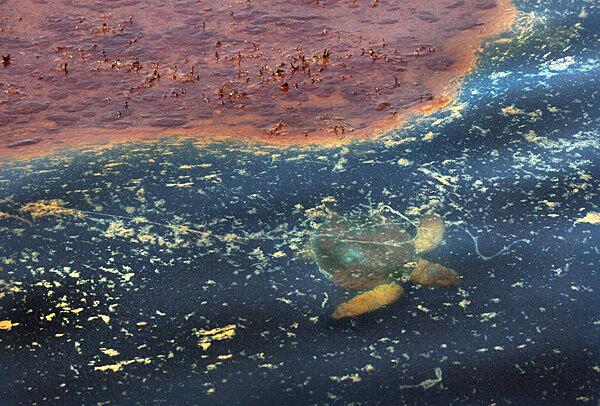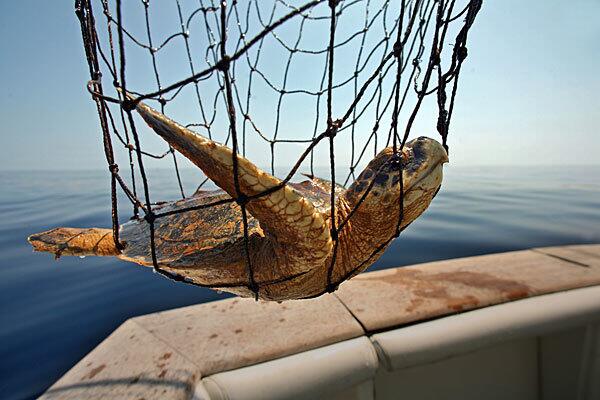
A Kemp’s Ridley turtle is rescued from the gulf. He will be treated and taken to a safer habitat. (Carolyn Cole / Los Angeles Times)
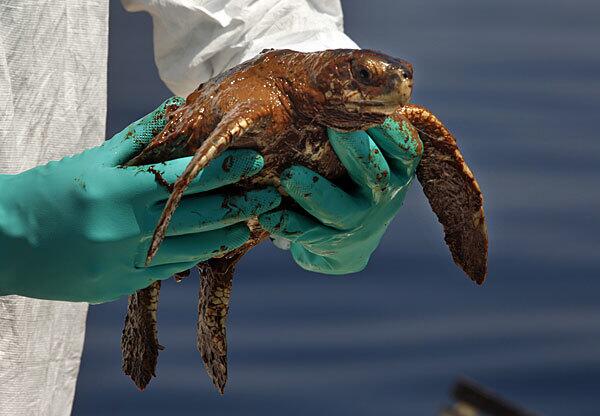
An oil-covered turtle is pulled out of the gulf, not far from the site of the Deepwater Horizon rig explosion. (Carolyn Cole / Los Angeles Times)
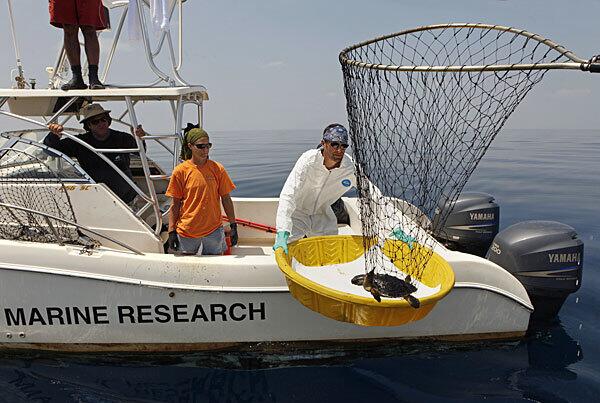
Veterinarian Brian Stacy, with the help of Jennifer Muller, prepares for a turtle to come aboard. They are part of a team of experts from the National Oceanic and Atmospheric Administration and the University of Florida working to save turtles from the gulf oil spill. (Carolyn Cole / Los Angeles Times)
Advertisement
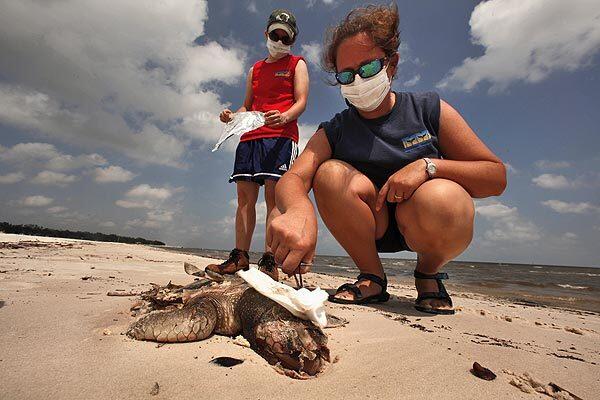
Becky Winstead, a research assistant at the Institute for Marine Mammal Studies in Gulfport, Miss., takes swabs of a dead Kemp’s Ridley turtle that washed up on the beach in Gulfport, La. Over 300 turtles have been found dead over the last month between Louisiana, Mississippi, and Alabama. Further testing will be done to determine what happened to the turtle. Over 20 turtles were found in one day this week. (Carolyn Cole / Los Angeles Times)
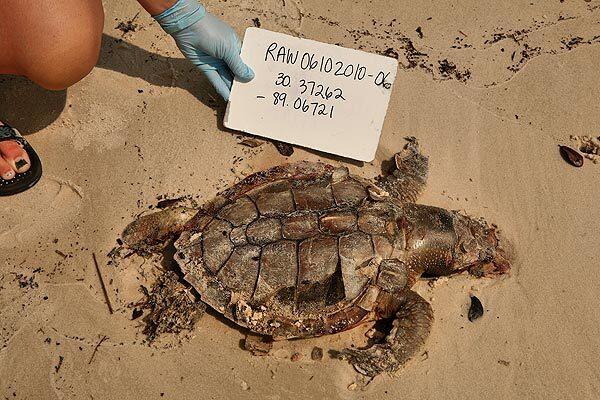
Becky Winstead, a research assistant at the Institute for Marine Mammal Studies in Gulfport, Miss., documents the discovery of a dead Kemp’s Ridley turtle that washed up on the beach in Gulfport, La., noting the GPS location and date. (Carolyn Cole / Los Angeles Times)
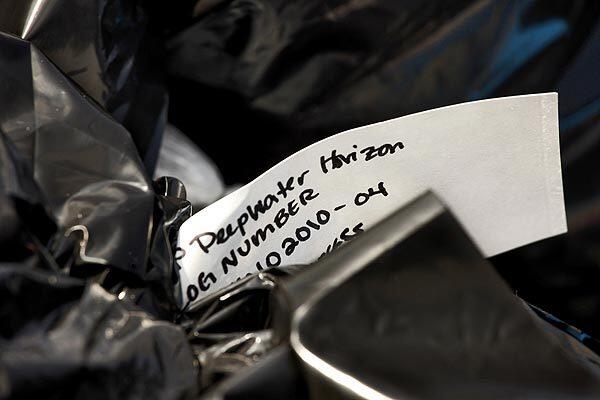
A tag with the name Deepwater Horizon is placed on each turtle carcass along with an identification number. Over 300 turtles have been found dead over the past month between
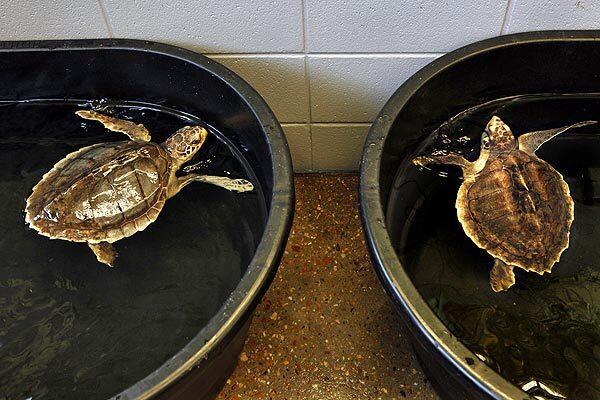
Two endangered Kemp’s Ridley turtles recover in individual tanks. As the oil spreads in the Gulf of Mexico due to the
Advertisement
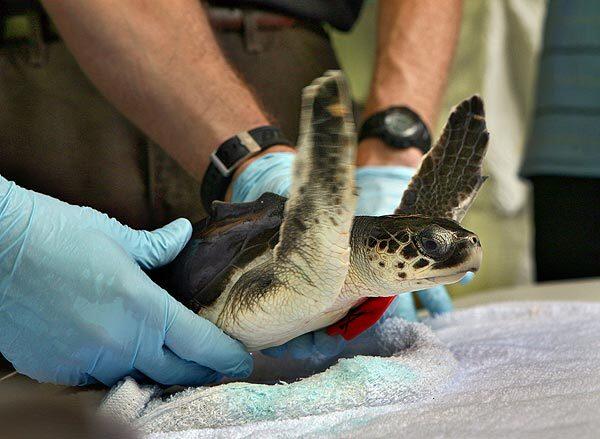
A recovered Kemp’s Ridley turtle is put in position to receive an antibiotic shot and get its temperature taken by Dr. Robert MacLean, head veterinarian at the Audubon Nature Institute in
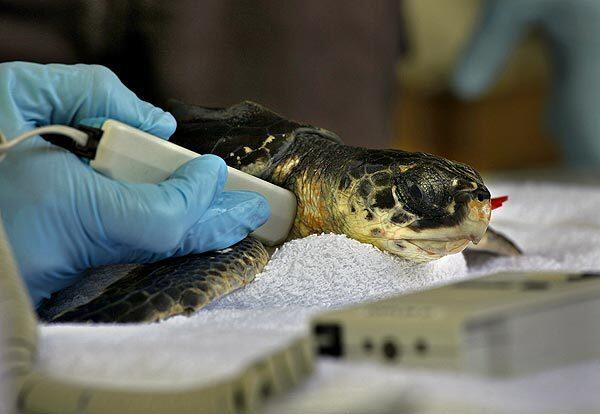
A Kemp’s Ridley turtle removed from the oil spill get its temperature taken. (Carolyn Cole / Los Angeles Times)
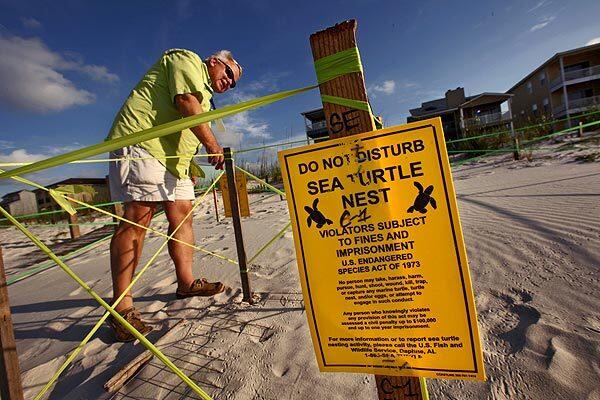
Mike Reynolds, director of Share the Beach, by a turtle nest in Gulf Shores, Ala., where some 80 sea turtles are due to come ashore to nest this month. By this time of year, we should have 11 nests. We have six, Reynolds says. The nests of the endangered turtles are well marked and will be watched carefully until the eggs hatch. (Carolyn Cole / Los Angeles Times)
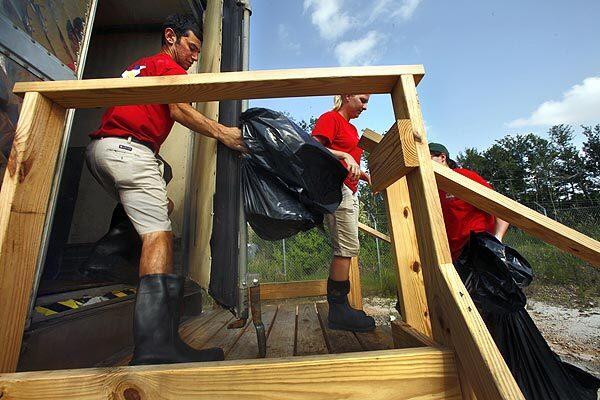
Six more turtle carcasses are placed in a freezer at the Institute for Marine Mammal Studies in Gulfport, Miss. Over 300 turtles have been found dead over the last month between
Advertisement
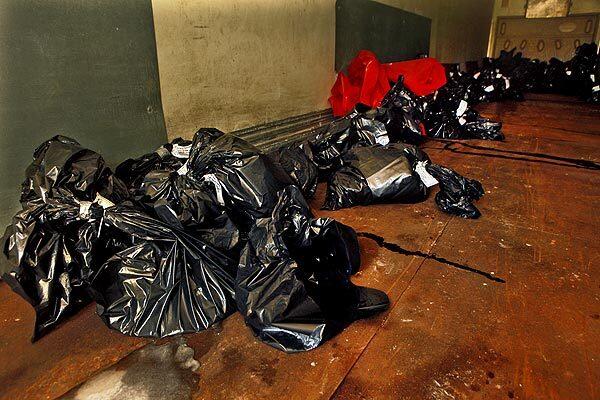
More than 135 turtle carcasses are stored in a semi-truck freezer at the Institute for Marine Mammal Studies in Gulfport, Miss. Over 300 turtles have been found dead over the last month between
